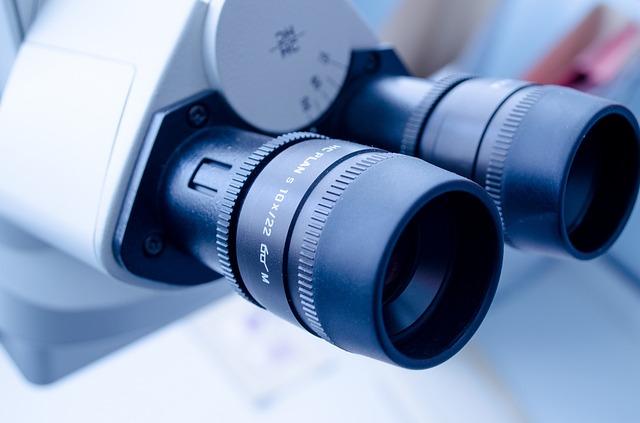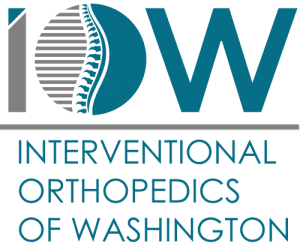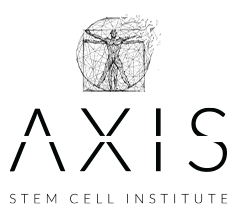Stem Cell Therapy in Washington: A Comprehensive Guide For WA Residents
Hey there, Washington residents! Have you ever wondered about the buzz surrounding stem cell therapy? Think of stem cells as the body’s natural repair system. Imagine spilling coffee on a book and wishing you could just “regenerate” those ruined pages. That’s what stem cells aim to do for our bodies. They have the potential to replace damaged tissue and act as a repair system for the body, making them a cornerstone of regenerative medicine.
Now, let’s take a trip down memory lane. Remember when you were a kid and had those toy building blocks? Each block could be anything you wanted it to be. Similarly, stem cells have the ability to develop into different cell types in the body. From bone marrow to tendons, these cells play a crucial role in healing and regeneration.
Washington State, especially places like the University of Washington (UW) and the Institute for Stem Cell and Regenerative Medicine (ISCRM), has been at the forefront of stem cell research. Whether you’re from bustling King County or scenic Vancouver, the use of stem cells in treatments like sports medicine and orthopedic procedures is becoming more prevalent.
If you’ve ever suffered from conditions like osteoarthritis or chronic pain, or know someone who has, stem cell therapies might offer a beacon of hope. But, how do you know if you’re a candidate for stem cell therapy? What does the procedure entail? And what are the benefits of stem cell treatments? We’re here to guide you through it all. So, buckle up and join us on this enlightening journey. And if you ever have questions or need more information, don’t hesitate to contact us. We’re here to help!
What are Stem Cells?
Alright, let’s get to the heart of the matter. Stem cells are like the superheroes of our body’s cellular world. Imagine if you had a magic eraser that could fix a mistake on a drawing. Stem cells are kind of like that for our bodies, but instead of erasing mistakes, they have the power to regenerate and repair.
Stem cells are unique because they can self-renew and differentiate into a variety of cell types. Think of them as the jack-of-all-trades in the cellular universe. There are a few main types of stem cells we should chat about:
Embryonic Stem Cells: These cells come from embryos and are pluripotent, which means they can turn into almost any cell type in the body. It’s like having a blank canvas that can transform into any masterpiece you can imagine.
Adult Stem Cells: Also known as somatic stem cells, these are found in various tissues in our body, like bone marrow and adipose tissue. They’re a bit more specialized than embryonic stem cells. If embryonic stem cells are the blank canvas, adult stem cells are like a canvas with a faint outline, ready to be filled in.
Induced Pluripotent Stem Cells (iPSCs): Scientists are pretty cool, you know? They found a way to take regular cells from our body and “reprogram” them to act like embryonic stem cells. It’s like turning a frog back into a tadpole!
Now, when it comes to practical applications, stem cells have been used in procedures like stem cell transplantation. For instance, bone marrow transplantation, which involves the transfer of stem cells from a healthy donor’s bone marrow to replace the diseased or malfunctioning bone marrow in a patient.
In the realm of regenerative medicine, stem cells are also being explored for their potential in treating conditions related to the musculoskeletal system, such as tendon injuries, osteoarthritis, and more. Imagine having a joint pain from a tendon injury, and instead of going for a total knee replacement, you could opt for stem cell injections. These injections aim to promote healing and alleviate pain by regenerating damaged tissues like cartilage, ligament, and even the meniscus.
The University of Washington (UW) and the Institute for Stem Cell and Regenerative Medicine (ISCRM) are leading the charge in this field, researching the myriad ways stem cells can be harnessed to heal and rejuvenate.
Up next, we’ll delve into the rich history of stem cell research in Washington and how it’s shaping the future of medicine.
The History of Stem Cell Research in Washington
Dive with us into the time machine as we journey through the rich tapestry of stem cell research in Washington. Just like the majestic evergreens that dot our landscape, the field of stem cell research has deep roots and has grown tall and strong in our state.
Washington State has always been a hub of innovation. From tech giants to coffee revolutions, we’ve been at the forefront of many groundbreaking movements. And stem cell research is no exception.
Early Beginnings: The initial spark of interest in stem cells can be traced back to curious scientists and medical professionals who saw potential in the body’s natural ability to heal. They wondered, “What if we could harness this power in a more targeted way?”
The University of Washington’s Role: The University of Washington (UW) has been a pivotal player in this journey. With its state-of-the-art research facilities and dedicated teams, the UW has contributed significantly to global stem cell research. The Institute for Stem Cell and Regenerative Medicine (ISCRM), in particular, has been a beacon of hope and innovation, driving forward both basic science and clinical applications.
Milestones: Over the years, there have been several key breakthroughs. From the discovery of embryonic stem cells to the development of induced pluripotent stem cells (iPSCs), Washington has been a part of these revolutionary moments. The use of mesenchymal stem cells derived from bone marrow and adipose tissue in regenerative medicine has also seen significant advancements here.
Legislation and Support: Our state has been proactive in supporting stem cell research. From funding initiatives to ethical guidelines, Washington has ensured that this field grows with integrity and purpose. The collaboration between research institutes, the state government, and the community has been instrumental in this.
Local Heroes: While the field is vast, some individuals and teams have stood out for their relentless pursuit of knowledge and their dedication to bringing the benefits of stem cell therapies to the residents of Washington. Their stories are a testament to the spirit of innovation that thrives here.
Washington’s commitment to stem cell research isn’t just about the science. It’s about hope, healing, and the promise of a brighter future for all. Whether you’re from the bustling streets of King County or the serene landscapes of Vancouver, the advancements in this field have the potential to touch lives everywhere.
As we move forward, we’ll explore the current landscape of stem cell treatments available in Washington. From approved therapies to experimental trials, there’s a lot to uncover.
Current Stem Cell Treatments Available in Washington
Welcome to the present day, where the magic of stem cell research is being transformed into real-world applications. Washington, with its pioneering spirit, is at the forefront of this transformation. Let’s dive into the treatments that are currently available and how they’re changing lives.
Orthopedic Treatments: Remember that time you twisted your ankle playing soccer or felt that nagging pain in your shoulder after a tennis match? Sports medicine has seen a revolution with the introduction of stem cell therapies. Conditions like rotator cuff injuries, tendon issues, and even osteoarthritis are being addressed using stem cells. Instead of going under the knife, patients can now opt for stem cell injections. It’s like using nature’s own toolkit to repair the musculoskeletal system.
Cardiac Therapies: The heart, our vital pump, isn’t left behind. Researchers are exploring how stem cells can help regenerate damaged heart tissue. Imagine a heart attack patient getting a new lease on life with the help of these tiny cellular wonders.
Neurological Applications: The brain, our body’s command center, has always been a complex organ to treat. But with stem cells, there’s hope. From degenerative conditions like Parkinson’s to traumatic injuries, stem cells offer a ray of hope in restoring function and improving quality of life.
Experimental Treatments and Clinical Trials: The Institute for Stem Cell and Regenerative Medicine (ISCRM) and other institutions in Washington are continuously pushing the boundaries. There are ongoing clinical trials exploring the efficacy of stem cells in treating conditions ranging from spinal cord injuries to autoimmune disorders. It’s like being on the cusp of a new frontier, with every trial bringing new insights and possibilities.
Safety and Efficacy: We understand that with new treatments come questions about safety. Rest assured, every stem cell procedure conducted in Washington adheres to stringent guidelines. It’s not just about pioneering treatments; it’s about ensuring they’re safe and effective. After all, what’s innovation without integrity?
Personalized Treatments: One size doesn’t fit all, especially in medicine. Treatments are individualized based on a patient’s specific needs. Whether it’s extracting autologous stem cells (those derived from a patient’s own body) from bone marrow or adipose tissue, or determining the right approach for a specific condition, the focus is on what’s best for the individual.
Up next, we’ll delve into the regulatory landscape in Washington, ensuring you’re well-informed about the guidelines and ethical considerations surrounding stem cell therapies. Stick around, there’s so much more to explore!
Regulatory Landscape in Washington
Navigating the world of stem cell therapies can feel like charting unknown waters. But fear not! Washington has set up a robust regulatory framework to ensure that every wave and ripple in this vast ocean is well-understood and safely navigated.
State Regulations and Guidelines: Washington State takes the safety and efficacy of stem cell treatments seriously. Our state has established clear guidelines that every clinic and research institution must adhere to. This ensures that every stem cell procedure conducted is not only cutting-edge but also meets the highest standards of safety and ethics.
Washington State Department of Health: This body plays a pivotal role in overseeing stem cell clinics and research institutions. They ensure that all practices are in line with state and federal regulations. It’s like having a dedicated lifeguard watching over the vast pool of stem cell research and treatments.
Ethical Considerations: The use of embryonic stem cells has always been a topic of ethical debate. Washington ensures that all research and treatments using these cells adhere to strict ethical guidelines. This includes informed consent from donors and transparency in research methodologies.
Patient Rights: As a resident of Washington, you have rights! This includes the right to be informed about the potential risks and benefits of any treatment, the right to refuse treatment, and the right to know the source of the stem cells being used. It’s all about empowering you to make informed decisions about your health.
Accreditation and Certifications: Clinics offering stem cell treatments must undergo rigorous evaluations to receive accreditation. This ensures that they have the necessary expertise, equipment, and protocols in place. Think of it as a restaurant earning its Michelin stars – it’s a mark of excellence and trustworthiness.
Collaboration with National Bodies: Washington collaborates closely with national entities like the NIH (National Institutes of Health) to ensure that our practices are in line with the best in the world. It’s a team effort, with the shared goal of ensuring the best outcomes for patients.
If you’re considering stem cell therapy or any form of regenerative medicine, it’s essential to be aware of these regulations and your rights. Knowledge is power, and we’re here to ensure you have all the information you need.
Coming up, we’ll guide you on how to choose the right stem cell clinic in Washington. With so many options out there, we’ll arm you with the knowledge to make the best choice for your health and well-being.
Choosing a Stem Cell Clinic in Washington
Alright, folks, let’s talk about making choices. Imagine you’re at a farmer’s market, looking for the juiciest apple. You’d inspect each one, ask the seller questions, and maybe even taste a sample. Similarly, when it comes to picking a stem cell clinic, you want to ensure you’re choosing the best fit for your needs.
Accreditation and Certifications: First and foremost, ensure the clinic has the necessary accreditations. Just like you’d trust a chef with a culinary degree more than a random person with a spatula, you’d want to trust your health to professionals who have been recognized by relevant bodies.
Experience and Expertise: Look into the medical staff’s qualifications and experience. A clinic with seasoned professionals who have a track record in stem cell therapies is a good sign. It’s like choosing a seasoned pilot to fly your plane.
Patient Testimonials and Reviews: Word of mouth still holds weight. Check out reviews, ask for patient testimonials, or even request to speak to someone who’s undergone treatment. It’s like reading reviews before trying out a new restaurant.
Treatment Options: Ensure the clinic offers a range of treatment options tailored to individual needs. Whether it’s stem cell injections for a rotator cuff injury or therapies for osteoarthritis, the clinic should provide comprehensive care.
Facilities and Equipment: State-of-the-art facilities indicate a clinic’s commitment to providing the best care. It’s akin to choosing a gym with the latest equipment – you know they’re invested in their patrons’ well-being.
Transparency: The clinic should be open about the sources of their stem cells, the procedures they follow, and the potential risks and benefits. It’s like a baker willingly sharing the ingredients of their best-selling cake.
Red Flags to Watch Out For:
- Promises that sound too good to be true. Remember, while stem cells offer hope, they aren’t a magic cure-all.
- Lack of clear information or reluctance to answer questions.
- Absence of patient follow-up or post-treatment care.
Location: While not the most critical factor, choosing a clinic close to home can be convenient, especially if multiple visits are required. Whether you’re from the heart of King County or the serene locales of Vancouver, there’s likely a reputable clinic nearby.
Remember, this is your health, and you deserve the best. Don’t rush the decision. Take your time and do your research.
Next, we’ll delve into the potential risks and benefits of stem cell treatments. It’s essential to have a balanced view, understanding both the incredible potential and the limitations of this form of regenerative medicine.
Potential Risks and Benefits
Embarking on the journey of stem cell therapy is a lot like setting sail on open waters. The horizon holds promise, but it’s essential to be aware of the potential storms. Let’s weigh the anchor and explore both the sunny skies and the choppy waves of stem cell treatments.
Benefits:
Natural Healing: Stem cells harness the body’s innate ability to heal. It’s like giving Mother Nature a helping hand to mend what’s broken.
Minimally Invasive: Many stem cell treatments, such as stem cell injections, are less invasive than traditional surgeries. Think of it as patching a small hole in a boat rather than rebuilding the entire vessel.
Reduced Recovery Time: Due to their minimally invasive nature, recovery times are often shorter. It’s akin to getting a small scratch versus a deep cut.
Potential to Alleviate Chronic Conditions: For conditions like osteoarthritis and chronic pain, stem cells offer a ray of hope to alleviate symptoms and improve the quality of life.
Avoidance of Surgery: In some cases, stem cell treatments can provide an alternative to surgeries, saving patients from potential complications and lengthy recovery periods.
Risks:
Infection: As with any procedure that breaks the skin, there’s a risk of infection. It’s like the occasional rain cloud on a sunny day – rare but possible.
Immune Rejection: Especially in treatments that don’t use autologous stem cells (those derived from the patient), there’s a risk the body might reject the introduced cells.
Overgrowth of Cells: In some cases, there’s a possibility that the introduced stem cells might grow uncontrollably.
Lack of Standardization: The field is still relatively new, and treatments can vary between clinics. It’s a bit like chefs having their own recipes for a dish – the core ingredients are the same, but the final result might differ.
Cost: Not all insurance providers cover stem cell treatments, making out-of-pocket expenses a consideration.
Informed Decision Making:
Before diving into any treatment, it’s crucial to have a heart-to-heart with your medical professional. Discuss your specific condition, the potential risks and benefits, and any alternative treatment options. Remember, knowledge is your compass, guiding you to make the best decision for your health.
The Future of Stem Cell Therapy in Washington
As we stand on the cusp of a new dawn in medicine, the future of stem cell therapy in Washington shines brightly. Just as the mighty Columbia River carves its path, shaping the landscape of our beautiful state, stem cell research is charting new territories in the realm of healthcare. Let’s set our sights on the horizon and envision what the future holds.
1. Advanced Research at Academic Institutions: The University of Washington and other academic powerhouses will continue to be at the forefront of stem cell research. With state-of-the-art facilities and a commitment to innovation, we can expect groundbreaking discoveries that will further enhance the efficacy and applications of stem cell treatments.
2. Personalized Stem Cell Therapies: The future is personal. With advancements in genomics and biotechnology, treatments will be tailored to an individual’s genetic makeup and specific needs. It’s like having a suit custom-made for you, ensuring the perfect fit and maximum efficacy.
3. Expansion of Treatable Conditions: As research progresses, the list of conditions treatable with stem cells will expand. From neurodegenerative diseases to cardiac ailments, the potential applications of stem cells will grow, offering hope to countless individuals.
4. Ethical and Regulatory Evolution: With new advancements come new challenges. The ethical landscape surrounding stem cell research, especially concerning embryonic stem cells, will continue to evolve. Washington will remain committed to ensuring that all research and treatments are conducted with the utmost integrity and respect for life.
5. Collaboration and Global Partnerships: Washington will strengthen its ties with global research institutions, fostering collaboration and knowledge exchange. Together, we’ll tackle the world’s most pressing medical challenges.
6. Community Engagement and Education: The future isn’t just about science; it’s about people. Washington will ramp up efforts to engage with the community, ensuring residents are well-informed and empowered to make decisions about stem cell therapies.
7. Economic Growth and Opportunities: The stem cell industry will play a pivotal role in Washington’s economy. From research positions to healthcare roles, the sector will create jobs and drive economic growth.
8. Continued Focus on Safety: While innovation is crucial, the safety of patients will always be paramount. Washington will continue to set rigorous standards, ensuring that every stem cell treatment offered is both cutting-edge and safe.
The river of progress is unstoppable, and Washington is poised to ride the waves of innovation. As we look to the future, one thing is clear: the best is yet to come.
Washington Stem Cell Therapy Providers
Here you can find the best stem cell therapy providers in the state of Washington. Fill out the form and a provider will contact you as soon as possible.






